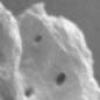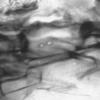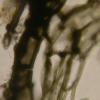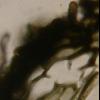
11-03-2009 22:48
 Hans-Otto Baral
Hans-Otto Baral
Hi I have here a pyreno with unitunicate asci t

11-03-2009 16:58
Guy GarciaEst-ce que ça cadre pour Lentomitella cirrhosa ?

11-03-2009 00:00
 Miguel Ángel Ribes
Miguel Ángel Ribes
Buenas noches Tengo varias recolecciones de Lac

10-03-2009 18:59
Bonsoir, Avant même d'avoir fait la micro, je v

10-03-2009 16:53
 David Malloch
David Malloch
Collections of Unguiculariopsis reported on this f

10-03-2009 11:24
Hello forum, three days ago I found a little bro

09-03-2009 23:57
 Yannick Mourgues
Yannick Mourgues
Bonsoir. Pas très loin des Stylodothis puccini
Bertia-related pyrenomycete?
Hans-Otto Baral,
11-03-2009 22:48
 Hi
HiI have here a pyreno with unitunicate asci that dissolve during maturity, the spores of which remind me of Bertia latispora. But the perithecia are smooth.
Descr.: 0.3-0.5 mm diam. Asci 6-8-spored, unitunicate, IKI-. Spores 23-35 x 8-11 µm, containing many minute LBs, 1-septate, very variable in shape.
Subaquatic on very rotten wood of Salix (or Populus), N-Germany (near Rehna, leg. T. Richter).
Zotto
Hans-Otto Baral,
11-03-2009 22:51
Hans-Otto Baral,
13-03-2009 22:17

Re:Bertia-related pyrenomycete?
Sorry, I corrected in the previous message that the perithecia often collapse.
Zotto
Zotto
MARIA VIRGINIA BIANCHINOTTI,
17-03-2009 21:10
Re:Bertia-related pyrenomycete?
Dear Zotto,
Have you seen Munk pores? Your ascospores are slightly similar to those of Bertia pulneyensis.
Virginia
Have you seen Munk pores? Your ascospores are slightly similar to those of Bertia pulneyensis.
Virginia
Hans-Otto Baral,
17-03-2009 22:32

Re:Bertia-related pyrenomycete?
Dear Maria
thanks, is it an Indian species? Where is it described? What do you mean with Munk pores?
Zotto
thanks, is it an Indian species? Where is it described? What do you mean with Munk pores?
Zotto
MARIA VIRGINIA BIANCHINOTTI,
18-03-2009 15:15
Re:Bertia-related pyrenomycete?
Yes, it is an Indian species described by Subramanian & Sekar in Kavaka 18: 19-90 (1990). Munk pores are small perforations that appear in the ascomatal cells. they are typical (but not exclusive) of the Coronophorales. Here are 2 photos of them.
MARIA VIRGINIA BIANCHINOTTI,
18-03-2009 15:15
Re:Bertia-related pyrenomycete?
Yes, it is an Indian species described by Subramanian & Sekar in Kavaka 18: 19-90 (1990). Munk pores are small perforations that appear in the ascomatal cells. they are typical (but not exclusive) of the Coronophorales. Here are 2 photos of them.
Virginia
Virginia
MARIA VIRGINIA BIANCHINOTTI,
18-03-2009 15:17
Hans-Otto Baral,
18-03-2009 18:45

Re:Bertia-related pyrenomycete?
Dear Maria
so they are pores in the wall of the peridial cells? Are they in the lateral wall between the peridial cells? Present in every cell or only locally? I will try to locate this feature.
Zotto
so they are pores in the wall of the peridial cells? Are they in the lateral wall between the peridial cells? Present in every cell or only locally? I will try to locate this feature.
Zotto
MARIA VIRGINIA BIANCHINOTTI,
18-03-2009 18:57
Re:Bertia-related pyrenomycete?
Dear Zotto, yes they are pores, not in every cell, randomly, 1 or2, sometimes more per cell, also in the lateral wall between cells. I´ve put a pdf of a paper in which you´d see more images.
Virginia
Virginia
Hans-Otto Baral,
22-03-2009 21:46

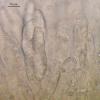
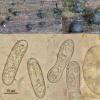
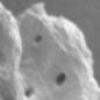
 7145.pdf
7145.pdf